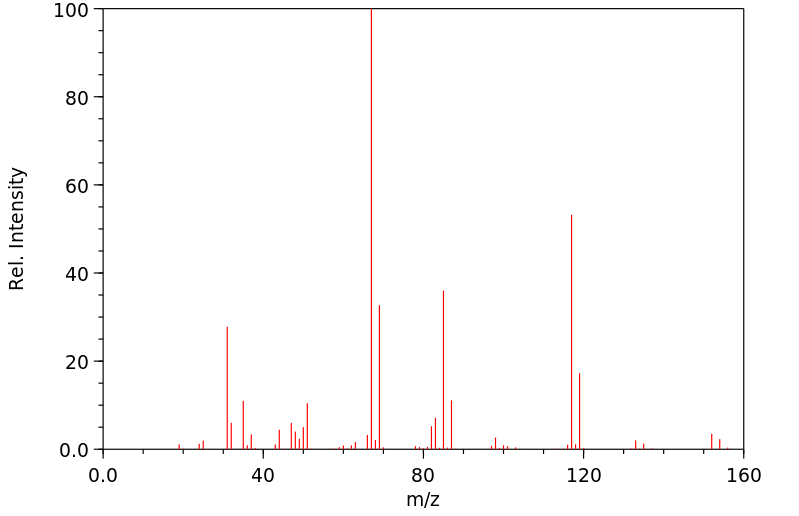代谢
1,2-二氯-1,1,2-三氟乙烷(HCFC-123a)是替代消耗臭氧的氯氟烃的一种潜在选择。研究了HCFC-123a在大鼠、小鼠和人体微粒体中的代谢,以及在大鼠和小鼠体内的代谢。大鼠、小鼠和人体肝脏微粒体将HCFC-123a代谢为无机氟化物和氯二氟乙酸。氟化物形成依赖于时间、NADPH、HCFC-123a和蛋白浓度。未处理大鼠的微粒体以较低速率(0.49 nmol氟化物/20分钟x毫克蛋白)氧化HCFC-123a。用吡啶和乙醇(P450 2E1的诱导剂)预处理大鼠,增加了氟化物释放的速率。在小鼠肝脏微粒体中,HCFC-123a氧化释放氟化物的速率显著高于大鼠肝脏微粒体(1.68 nmol氟化物/20分钟x毫克)。将HCFC-123a与微粒体和二乙基二硫代氨基甲酸酯(100微M,P450 2E1的抑制剂)一起孵化,氟化物形成减少了60%以上。在不同样本的人体肝脏微粒体中,氟化物形成的速率是未处理大鼠肝脏微粒体中观察到的速率的两倍到四倍。在大鼠和小鼠暴露于封闭循环暴露系统中的HCFC-123a浓度高达5000 ppm时,尿中代谢物中发现了氯二氟乙酸和无机氟化物。在大鼠暴露于2000 ppm以上的HCFC-123a 6小时后,HCFC-123a的生物转化达到饱和,而在小鼠暴露于高达5000 ppm的浓度时,没有出现饱和现象。获得的结果表明P450 2E1在HCFC-123a的氧化和HCFC-123a在啮齿动物中的不同氧化生物转化能力中发挥重要作用。因此,在给予高剂量后,小鼠可能对HCFC-123a的毒性作用更敏感。
1,2-Dichloro-1,1,2-trifluoroethane (HCFC-123a) is a potential alternative to replace ozone-depleting chlorofluorocarbons. The metabolism of HCFC-123a was studied in microsomes of rats, mice, and humans as well as in rats and mice in vivo. Rat, mouse, and human liver microsomes metabolized HCFC-123a to inorganic fluoride and chlorodifluoroacetic acid. Fluoride formation was dependent on time and NADPH, HCFC-123a, and protein concentration. Microsomes from untreated rats oxidized HCFC-123a at low rates (0.49 nmol fluoride/20 min x mg protein). Pretreatment of rats with pyridine and ethanol, inducers of P450 2E1, increased the rates of fluoride release. In mouse liver microsomes, the rates of HCFC-123a oxidation to release fluoride were significantly higher (1.68 nmol fluoride/20 min x mg) than in rat liver microsomes. Incubation of HCFC-123a with microsomes and diethyldithiocarbamate (100 microM), an inhibitor of P450 2E1, reduced fluoride formation by more than 60%. In different samples of human liver microsomes, rates of fluoride formation were between two- and fourfold higher than those observed in liver microsomes from untreated rats. In rats and mice exposed to concentrations of HCFC-123a up to 5000 ppm in a closed recirculating exposure system, chlorodifluoroacetic acid, and inorganic fluoride were identified as urinary metabolites. The biotransformation of HCFC-123a in rats was saturated after exposure to more than 2000 ppm HCFC-123a for 6 hr, whereas no saturation was evident in mice exposed to concentrations of up to 5000 ppm. The obtained results suggest a major role of P450 2E1 in the oxidation of HCFC-123a and in the different capacities for oxidative biotransformation of HCFC-123a in rodents. Mice may thus be more sensitive to toxic effects of HCFC-123a depending on biotransformation after administration of high doses.
来源:Hazardous Substances Data Bank (HSDB)







